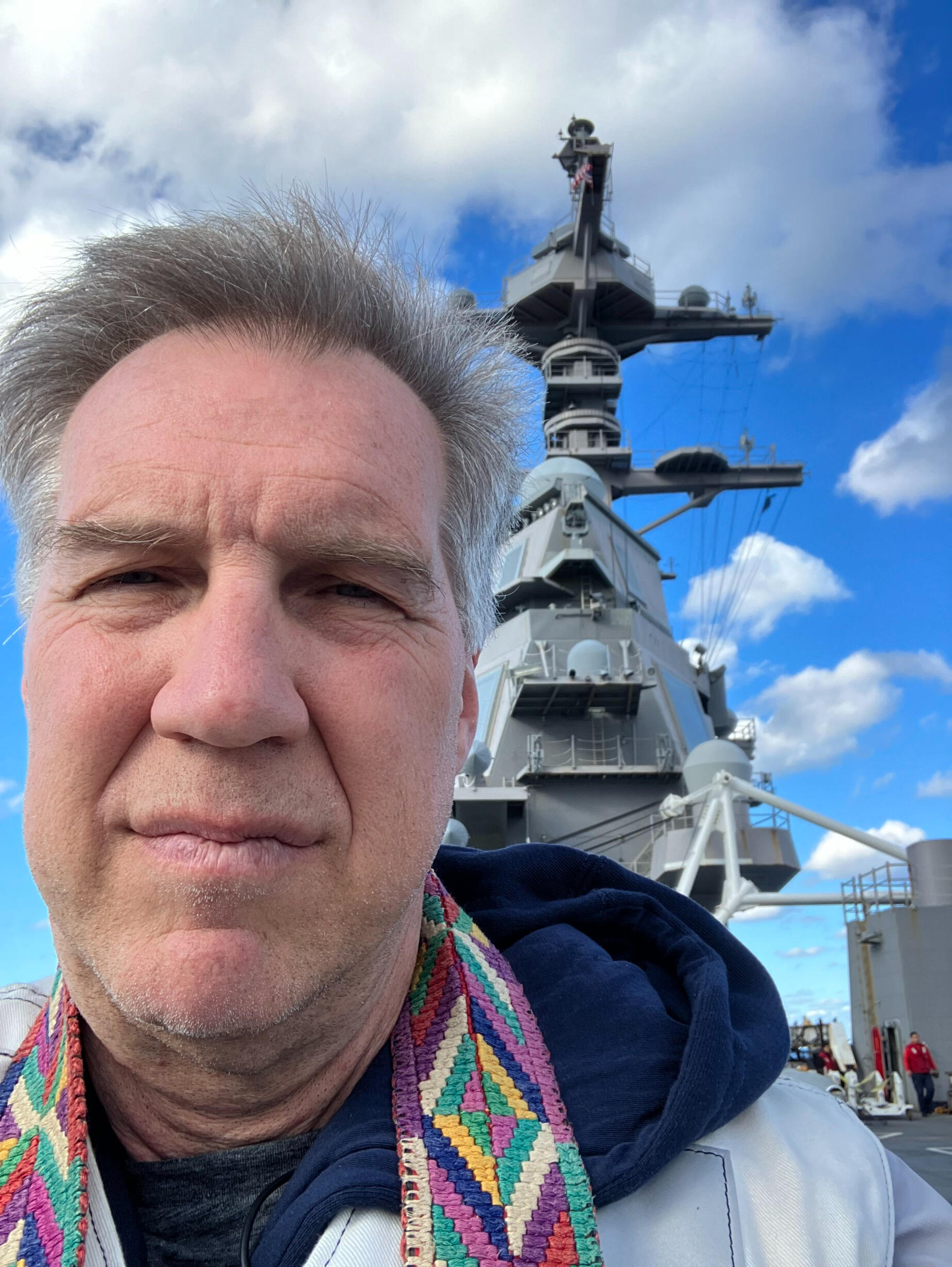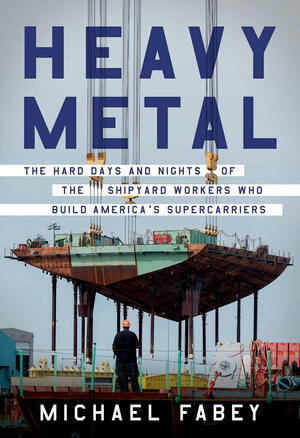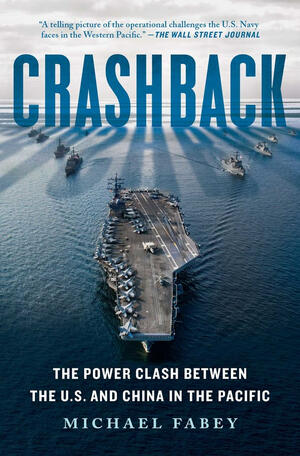Michael Fabey, Award-Winning Investigative Journalist
Heavy Metal
The story of the construction of the John F. Kennedy at the shipyard in Newport News, Va. This is the incredible tale of the people who built the most technologically advanced aircraft carrier meant to protect our nation for the rest of the century.
Michael Fabey has reported on military and naval affairs for most of his career. In his work for National Geographic Traveler, the Economist Group, Defense News, Aviation Week, and Janes, he has collected more than two dozen reporting awards, including the prestigious Timothy White Award. Few journalists have had as much firsthand experience of America’s naval ships and aircraft and the officers who command them.
An extraordinary story of American can-do, an inside look at the building of the most dangerous aircraft carrier in the world, the John F. Kennedy.
This chilling account of the “warm war” over control of the South China Sea—one that is threatening to flare into full-scale conflict—presents a “telling picture of the operational challenges the US Navy faces in the western Pacific” (Wall Street Journal) from an award-winning journalist with unprecedented access to the highest naval officers in America and China.
I tell stories about interesting people doing interesting work
About Fabey
Michael Fabey is an award-winning journalist who has more than three decades of experience writing for newspapers, magazines and online news sites. As author of Crashback, he gained unparalleled access to the Chinese naval command after 15 years covering the Pentagon.
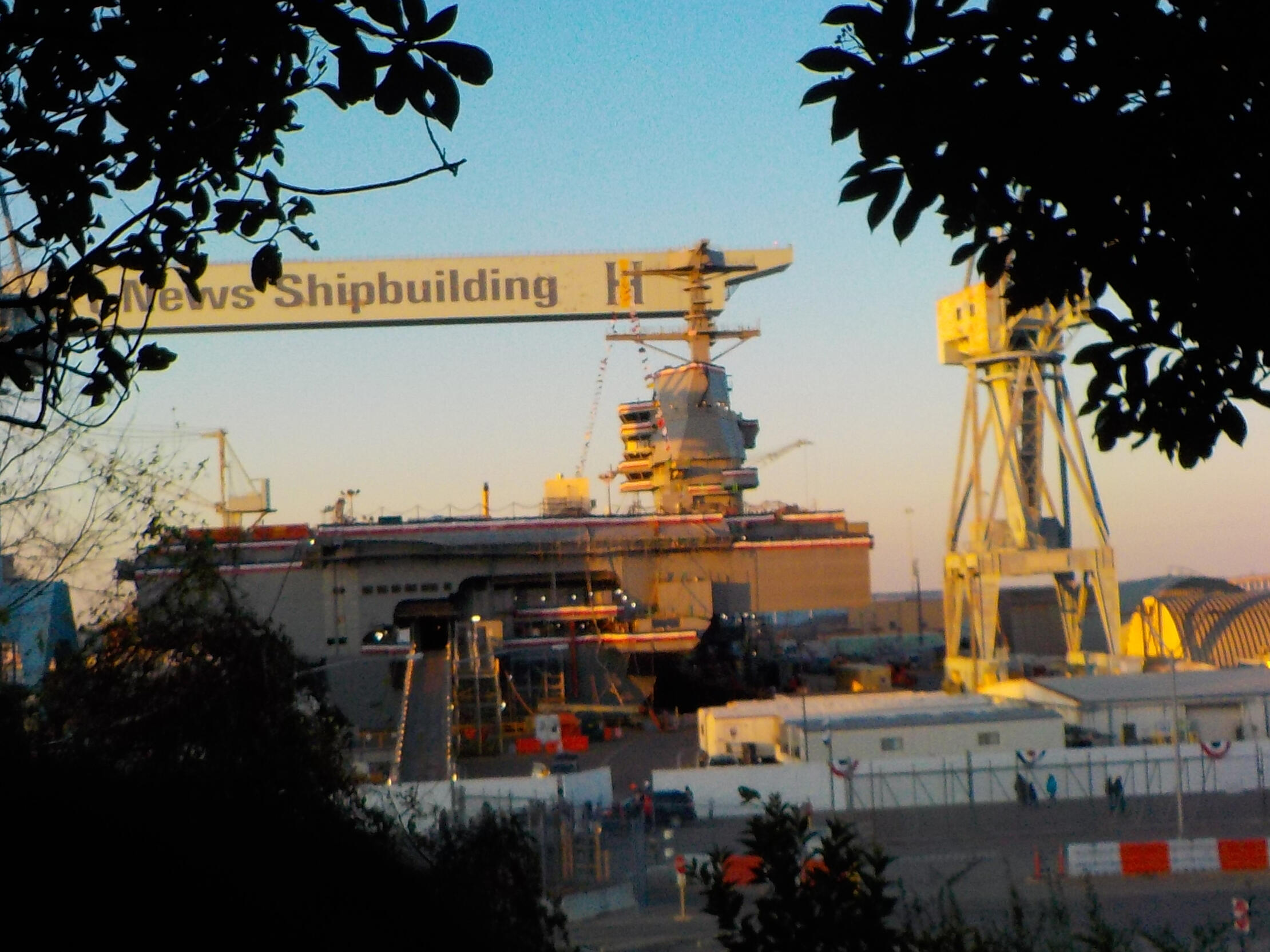
My Books
From the moment I first saw the Newport News shipyard, I was mesmerized by the sheer size of the the waterfront and the carriers they built there. I wondered what kind of men and women could accomplish such work? As detailed in Heavy Metal, they are a remarkable clan.
Datelines
I'll travel to the ends of the Earth to talk to the real people doing the actual work for my books and articles -- like traveling to the the Norwegian Arctic to watch US Marines and other NATO forces hone their skills conducting combat in the High North.

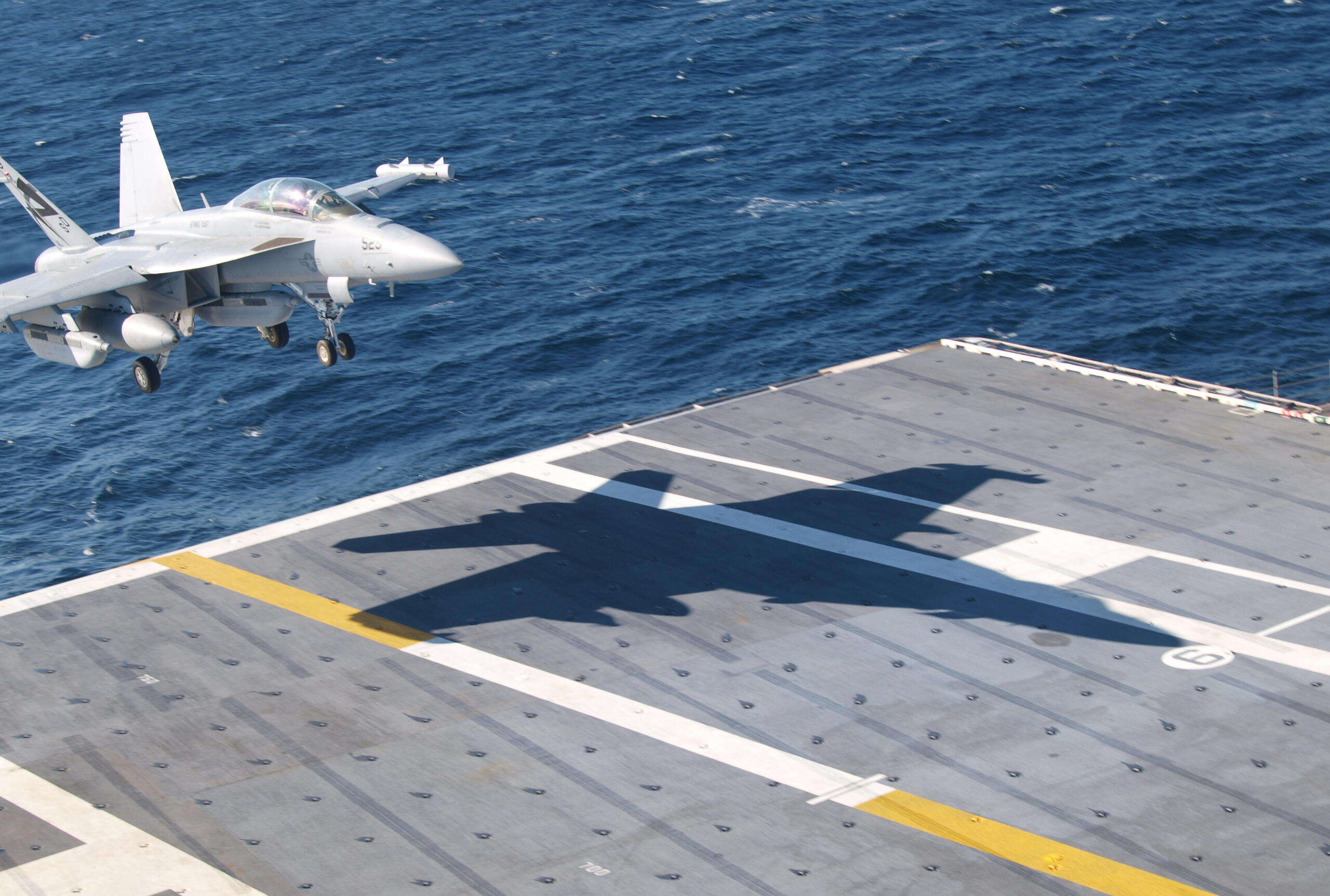
Want to know what I'm thinking about?
Sign up for my newsletter for updates, articles, and curated military news.
About Michael Fabey
Why I Write What I Write
Born into the tough neighborhoods of Northeast Philadelphia and defying the odds to attend college in Trenton, New Jersey, and finish in Australia (using a bicycle for transportation), I learned the essence of success as an investigative journalist early: self-preservation, persistence, and a tough insistence to go where a story leads.I have done what it takes to get the news that matters to U.S. national and economic security for over 30 years. That has included chasing pirates into the Amazon of Brazil, boarding as crew on cargo ships and gaining access to U.S. warships, and somehow convincing Chinese authorities to allow me to interview them aboard their most sensitive military naval vessels.In the mid-1990s, I worked as a merchant seaman on a cargo ship from the southeast of Florida to the sister coast of Sao Paulo Brazil for the Journal of Commerce, via Venezuela. For the rest of that decade and until 2005, I collected datelines like postage stamps throughout Latin America, Europe, and the Persian Gulf, living and working for a bit in Brazil, with passable Portuguese in tow.Like many people, I went through changes with my perspective and career after the terrorist attacks of Sept. 11, 2001. From that point forward, I focused my reporting on stories about U.S. national defense. Since that time, I’ve flown in F-15s, V-22s, and a variety of other aircraft; spent weeks on aircraft and nuclear missile submarines; and lived with troops as they traveled in Bradleys, Humvees, and whatever else they got around on through terrain from the forests outside Savannah, Georgia, to the Arctic tundra in Norway.After gaining access to Chinese vessels, aircraft and bases, I provided briefings to Pentagon personnel and Crashback filled out the reading lists for many stationed in the Western Pacific. In much the same way, Heavy Metal captures the importance, the aspirations and the danger of shipbuilders on the American waterfront.I am now trekking with US forces in the Arctic, to track the US needs, efforts and difficulties in protecting the American High North.
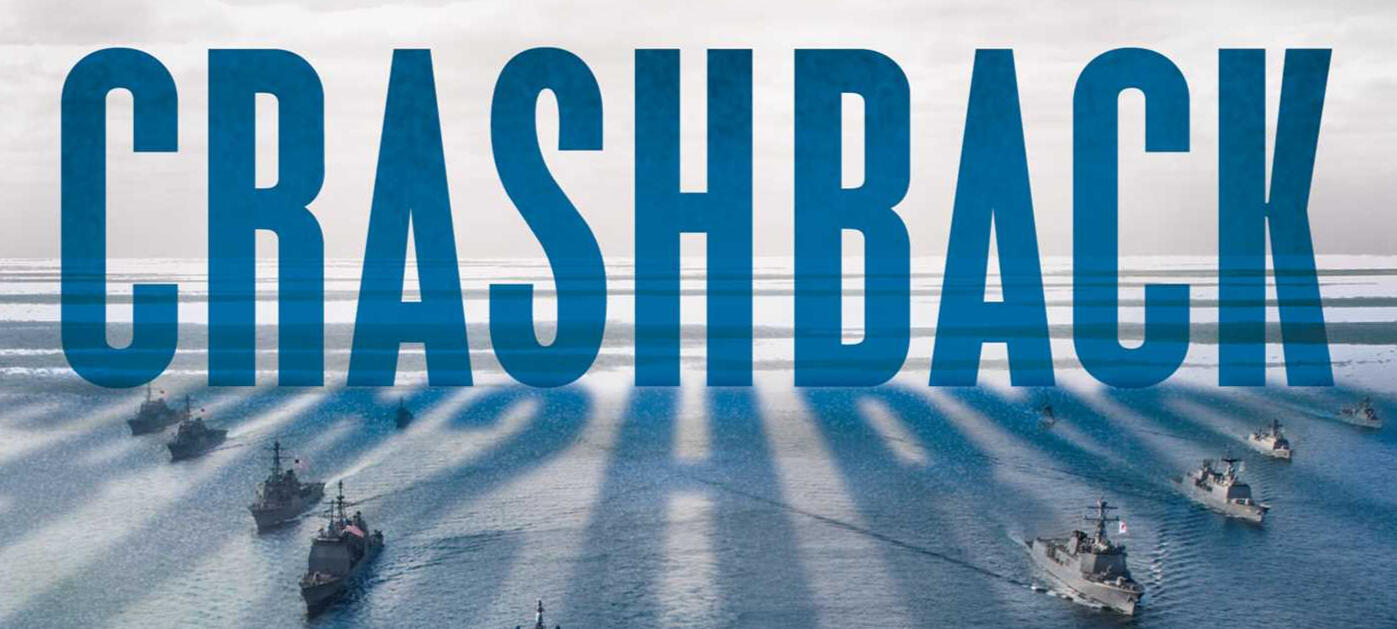
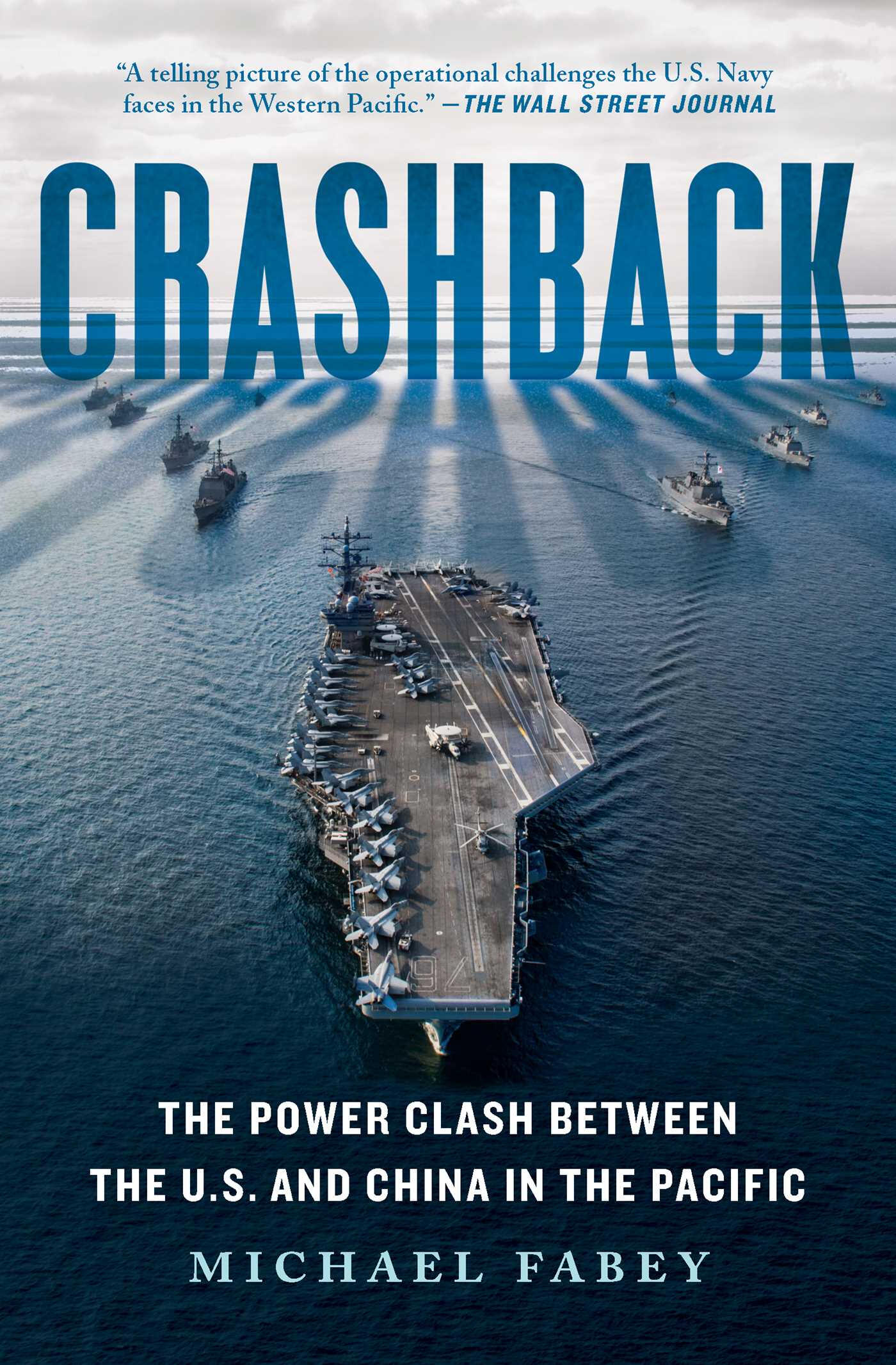
An alarming message from an award-winning journalist with unprecedented access to the highest naval officers in America and China and their ships and weapons, this is a chilling look at the “warm war” over control of the South China Sea—one that is threatening to flare into full-scale conflict.Out in the Pacific Ocean, there is a war taking place. It is a “warm war,” a shoving match between the United States, since WWII the uncontested ruler of the seas, and China, which now possesses the world’s largest navy. The Chinese regard the Pacific, and especially the South China Sea, as their ocean, and they’re ready to defend it. Each day the heat between the two countries increases as the Chinese try to claim the South China Sea for their own, and the United States insists on asserting freedom of navigation. Throughout Southern Asia, countries such as Vietnam, Malaysia, the Philippines, Singapore, and South Korea respond with outrage and growing fear as China turns coral reefs into manmade islands capable of supporting airstrips and then attempts to enforce twelve-mile-radius, shoot-down zones. The immediate danger is that the five trillion dollars in international trade that passes through the area will grind to a standstill. The ultimate danger is that the US and China will be drawn into all-out war.Pulitzer Prize-nominated journalist Michael Fabey has had unprecedented access to the Navy’s most exotic aircraft carriers, cruisers, destroyers, aircraft, and submarines, as well as those who command them. He was among the only journalists allowed to board a Chinese war vessel and observe its operations. In Crashback, Fabey describes how every year the US is “losing sea.” He predicts the next great struggle between military superpowers will play out in the Pacific, and his book, more than any other, is an accurate preview of how that conflict might unfold.
Praise For Crashback
“Crashback is a fascinating mix of well-reported fact and geopolitical analysis that illuminates critical strategic issues for the United States. Above all it asks the right questions as we collectively grapple with the most critical international relationship of the 21st century: China and the United States of America.”
—Admiral James Stavridis, USN (ret.), former Supreme Commander, NATO, and author of "Sea Power: The History and Geopolitics of the World’s Oceans"
All too often books about the modern U.S. Navy are dry, academic analyses of geopolitical theory or the latest Defense Department gobbledygook. They're full of organizational theory, impenetrable military lingo, sloganeering designed to increase budgets, or worse, with limited value or interest to a reader looking to get a handle on what's going on around the world.Well, that's not "Crashback." Though that title is, well, Navy lingo (for a sudden reversal of the engines, or "all back emergency full"), the book stands apart because it is so readable. And far from being dumbed down to achieve readability, it is based on very impressive experiential reporting at sea as well as knowledgeable coverage of the defense bureaucracy from within the halls of the Pentagon. The book is written in a "you are there" style, to such an intense degree that some of the chapters are even written in the present tense. The experience of reading it is like sitting next to a really well informed guy in a bar who can share the inside dope about what the Chinese are really up to, knows how weapons work, and hears the latest gossip about what's really going on with our fleet in the Pacific because he was JUST there on the bridge of an American warship the day they held an exercise and a ChiCom spy ship crashed the party, upsetting everybody.The scope covers incidents in the Western Pacific from about 2002 to the present day, and puts the current conflict with China in good context... Reading the book is eye-opening on many levels. For instance, the author went on board a Chinese ship during a major exercise.Highly recommended.
—Verified Amazon Review
“Crashback, by one of the world’s most knowledgeable and well-connected journalists, is tense and fast-paced. To dig out the real story of the coming clash between the U.S. and China in the Pacific, Fabey tracked down four-star admirals, toured the flight decks of aircraft carriers, spent hours in the wardrooms of U.S. Navy cruisers, and stood on the bridges of Chinese destroyers. He also probed the secrets of Hainan Island, home of China’s most important naval bases. You won’t know where this important story of looming confrontation is going until you read this book.”
—Robert Haddick, Visiting Senior Fellow, The Mitchell Institute for Aerospace Studies and the author of "Fire on the Water: China, America, and the Future of the Pacific"
Mike Fabey provides an excellent analysis of the current military/geopolitical situation in the Pacific between the US and China and he sheds much light on the true struggle taking place daily. I especially appreciated the early historical and build-up chapters that put the current navies' capabilities and approach to maritime policy in perspective. Fabey's discussions and observations reveal a deep understanding of the complex issues underpinning this "warm war," as he calls it, and of the forces arrayed on both sides of the Pacific. Fabey's book should be a wake-up call to our current Administration and Congressional leaders to adequately fund not only the expansion of our current naval capabilities but to also address the significant maintenance issues that are wide-spread in the surface and sub-surface navy and in naval aviation. Such an in-depth discussion of serious issues is not provided by our nightly news, but should be. For anyone who has an interest in modern naval warfare or the situation in the Far East, this book is a "must read." I strongly recommend it.
—Verified Amazon Review
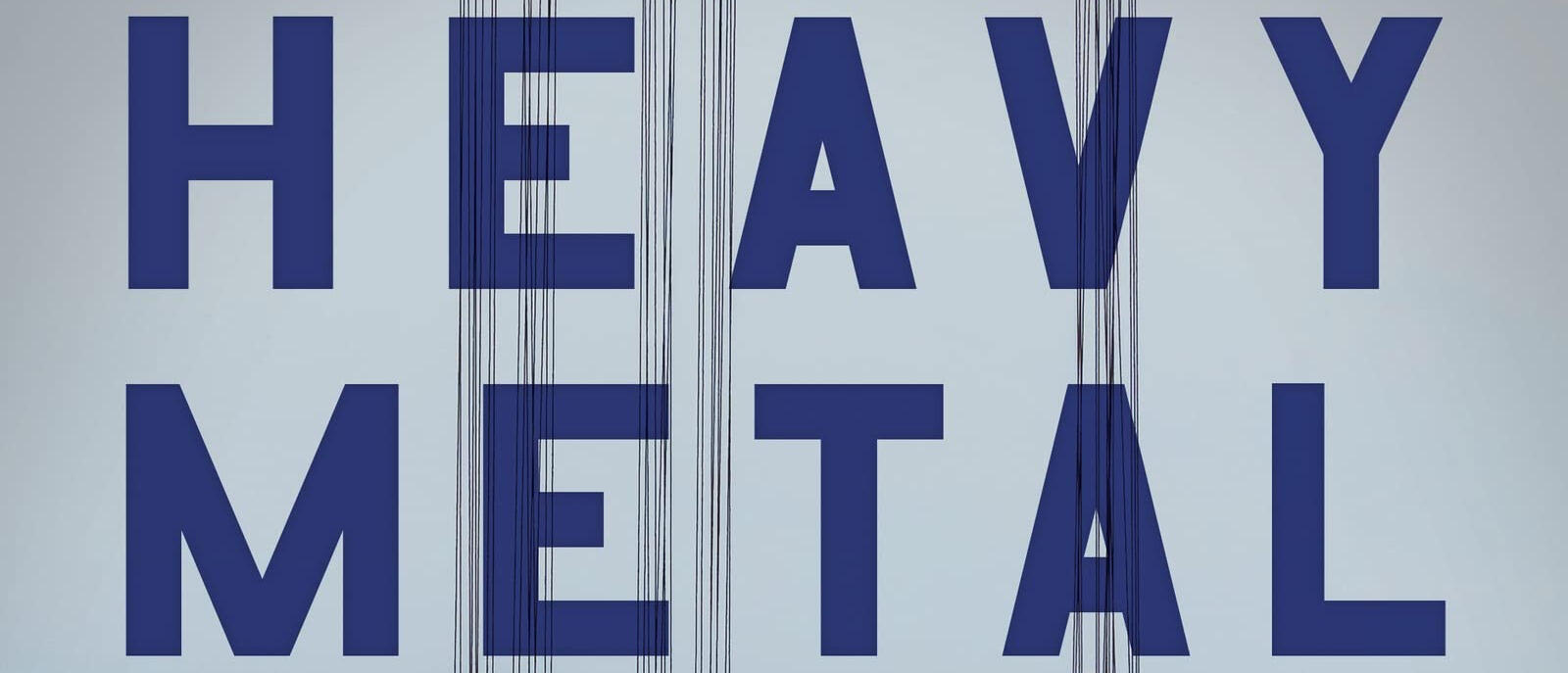
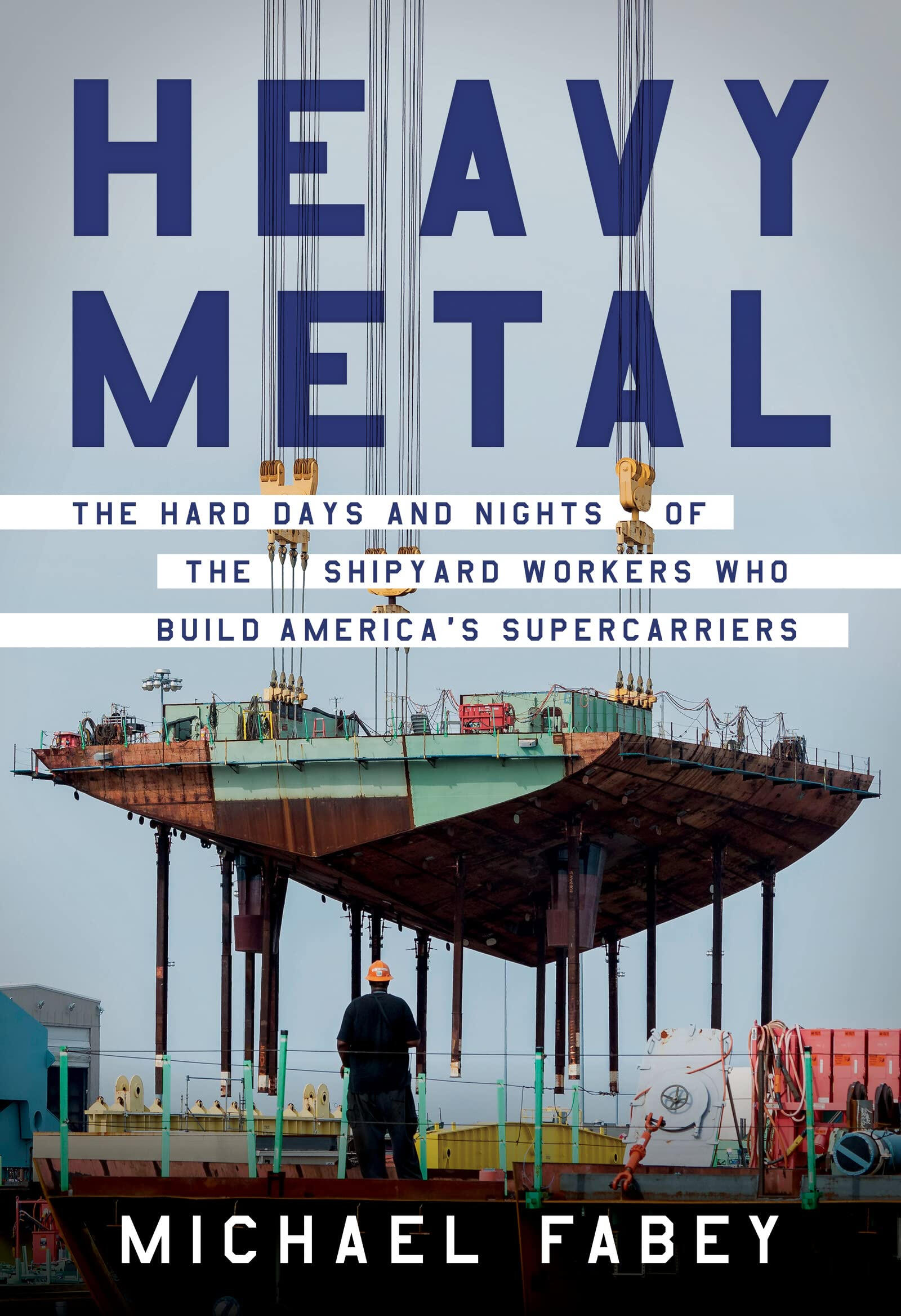
“Heavy Metal, which plows sturdily through the swells and troughs of big-ticket ship construction, does a noble thing in affirming that nowhere else in the world has this species of freedom been built so well and for so long.”
— The Wall Street Journal
An extraordinary story of American can-do, an inside look at the building of the most dangerous aircraft carrier in the world, the John F. Kennedy.Tip the Empire State Building onto its side and you’ll have a sense of the length of the United States Navy’s newest aircraft carrier, the most powerful in the world: the USS John F. Kennedy. Weighing 100,000 tons, Kennedy features the most futuristic technology ever put to sea, making it the most agile and lethal global weapon of war.Only one place possesses the brawn, brains and brass to transform naval warfare with such a creation – the Newport News Shipbuilding yard in Virginia and its 30,000 employees and shipyard workers. This is their story, the riggers, fitters, welders, electricians, machinists and other steelworkers who built the next-generation aircraft carrier.Heavy Metal puts us on the waterfront and into the lives of these men and women as they battle layoffs, the elements, impossible deadlines, extraordinary pressure, workplace dangers and a pandemic to complete a ship that will be essential to protect America’s way of life.The city of Newport News owes its very existence to the company that bears its name. The shipyard dominates the town—physically, politically, financially, socially, and culturally. Thanks to the yard, the city grew from a backwater to be the home of the premier naval contractor in the United States.Heavy Metal captures an indelible moment in the history of a shipyard, a city, and a country.
Praise For Heavy Metal
“Heavy Metal, which plows sturdily through the swells and troughs of big-ticket ship construction, does a noble thing in affirming that nowhere else in the world has this species of freedom been built so well and for so long.”
— The Wall Street Journal
Captain Hakimzadeh, OpNav N98 Aircraft Carrier Requirements branch head,
previous commander of the USS Harry S Truman -
Fabey displays his journalistic chops by delving deeply into the lives of those who trek to the shipyard every day. He explores the individual stories of riggers, construction supervisors, shipyard presidents, Sailors, and officers. The anecdotes about parking wars, schedule changes and COVID mitigations make clear their deep sense of patriotism and a desire to get the job done right.The FORD class was set up for trouble from the start. In the early 2000’s, Secretary of Defense Donald Rumsfeld felt the time was right for a generational leap in capability for each new weapon system the Services proposed. He rejected the Navy’s plan to incrementally add new technology into three carriers in favor of building 20 transformational technologies into the first-in-class FORD.NNS faced a difficult paradox. It was the only shipyard capable of building these ships, but it is also so dependent on carrier work that every new contract means life or death for the shipyard and the city it supports. It had no choice but to accept the challenge. Multiple delays and cost overruns in the ensuing years prove that this was a leap too far for the shipyard.By focusing on the human stories, Fabey sidesteps the fact that the FORD class has thus far been a failure for NNS. Consistent systemic failures are either ignored or presented as matter of fact. Most readers will know that Congresswomen Elaine Luria once referred to FORD as a “thirteen billion dollar berthing barge” because of these problems. The book spends a lot of time discussing delivery delays as workday challenges. But by not addressing the underlying organizational faults behind these delays, Heavy Metal may leave some readers wanting.Fabey’s descriptions of the Electromagnetic Aircraft Launch System (EMALS), Advanced Arresting Gear (AAG), Dual Band Radar, and other topside systems are excellent. He provides a clear explanation of the ship's new flight deck layout, fueling system, and advanced weapons elevators. These advances will make the FORD class the most formidable ships in history.The author explores NNS history and culture to include workers pursuit of labor rights with the “hard hats” pitted against the “suits” and the eventual decision to affiliate with the United Steelworkers of America. There is also a rich discussion about the quest for racial equity in a company that was once the quintessential “plantation” model for heavy industry.Finally, Fabey’s descriptions of CAPT Todd Marzano and his pre-commissioning crew’s efforts to build a culture of excellence on KENNEDY are genuine and heartfelt. He provides a fitting testament to the Sailors that CNO Mike Gilday has called “the Navy’s asymmetric advantage."Heavy Metal presents a fresh, sympathetic perspective on the human aspects of the shipbuilding industry. It is an excellent read for anyone looking to understand the technology behind the design and construction of the FORD class carriers. This book would be useful to crews that are preparing for complex shipyard periods.
The U.S. Navy’s aircraft carriers are the largest warships afloat and a premier symbol of America’s worldwide presence. Military and naval affairs journalist Fabey presents a detailed investigation of how these vessels are built and by whom, covering all of the trials and tribulations of the immense Newport News, Virginia, shipyard. He delves into the history of the city, its famous yard, and the legendary ships built there, and he profiles the dedicated steelworkers and tradesmen who do the work. The star of the show is the Gerald R. Ford-class aircraft carrier USS John F. Kennedy (CVN-79), launched in 2019, and Fabey tracks its construction in detail. National security and defense spending are inherently political, and Fabey describes the policy shifts of three different administrations, Congressional debates, and the partisan leanings of the union steelworkers. It's a fascinating account of the implementation of new designs and advanced technology, while Fabey is most focused on the personalities of the shipbuilders and their navy counterparts. An unusual and excellent immersion in an often-overlooked aspect of America’s maritime and manufacturing strength.
——James Pekoll

"Journalist Fabey (Crashback) chronicles the construction of the USS John F. Kennedy at a Newport News, Va., shipyard in this richly detailed account… Fabey also empathetically portrays the workers’ fears of layoffs, illnesses, injuries, and mistakes, as well as the satisfaction they take in contributing to the national defense. This poignant portrait of working-class life will appeal to fans of Studs Terkel."
——Publisher's Weekly
The book follows the construction of the John F. Kennedy (CVN-79), the second ship in the Gerald R. Ford class, from the first metal cut in 2011 to late 2021, still three years away from completion. With flashbacks to shipyard history, budgetary decisions in the Pentagon, and the increasingly divisive politics of the past decade, Heavy Metal reminds us that building these 100,000-ton leviathans is an inherently human endeavor.
——US NAVAL INSTITUTE JUNE 2022
